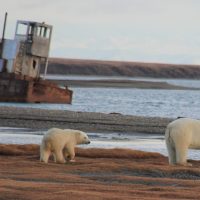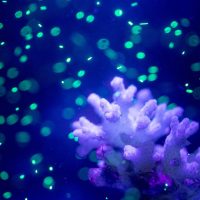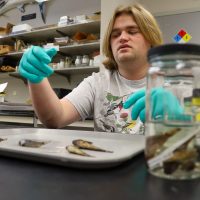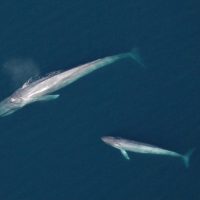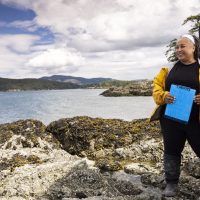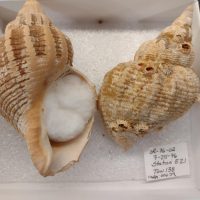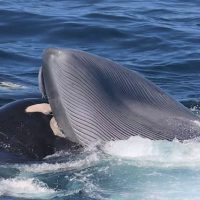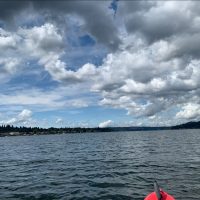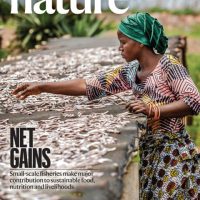Filter Results
Scientists pilot a new method to measure the health of wild polar bears
Climate change threatens the health of polar bears across the Arctic. A study published in Conservation Physiology on March 5, introduces a new approach to measuring the health of polar bear populations, drawing inspiration from a well-known concept in human medicine: allostatic load. The lead author of the study is SAFS PhD student, Sarah Teman, working with UW Professor, Kristin Laidre, and scientists from USGS and Fish and Wildlife Health Consulting.
Read moreMicroplastics and their macro problems: UW Daily speaks to Jacqueline Padilla-Gamiño
Microplastics are everywhere. From the clothes you wear to the food you eat, to even your toothbrush, microplastics are difficult to avoid. And these tiny pieces of plastic have big consequences for both humans and the wider environment. UW Daily speaks to Jacqueline Padilla-Gamiño about her research into microplastics and marine organisms such as corals and anemones.
Read moreWho’s who? Using identification tools to tell freshwater sculpin apart
Scanning through the rows and rows of preserved fish housed in the UW Fish Collection, it’s easy to get lost trying to figure out what each fish is, especially to the untrained eye. Fish identification is a necessary step when preserving specimens from the wild, which deliver key insights for researchers delving into the untold secrets of fish. For SAFS undergraduate Liam Aston, his capstone research involves looking at Cottus specimens in the Fish Collection, a group of freshwater sculpin found throughout the Northern Hemisphere.
Read moreUnravelling the mystery of the missing blue whale calves
Only two blue whale births have ever been recorded in human history, an extraordinary mystery given they give birth every two to three years. Calves are also only rarely sighted—far less than would be expected from their pregnancy rates. Calves closely follow their moms and are sighted as mother-calf pairs, but why are so few detected? A new UW study by Trevor Branch proposes why. Its explanation hints at when and where the unseen births are happening and where blue whale calves spend their earliest months.
Read moreCelebrating Women in Science
10 years ago, the UN declared 11 February as the International Day of Women and Girls in Science. On this 10th anniversary at the University of Washington, we’re celebrating our women in aquatic and marine science: women who are leaders in their fields, women who are aspiring to be the next generation of fisheries scientists and marine biologists, women who are uplifting and supporting other women in science.
Read moreEmbracing community, mentorship and interdisciplinary science during Black History Month
Interdisciplinary. Providing mentorship. Community-focused. These are just some of the terms that come to mind for Chris when she describes what it means to be a Black scientist. “When we think about being a non-majority community in STEM – and in this instance Black in STEM – we are tasked with a three-pronged responsibility because this is a lived experience for so many of us: being inherently interdisciplinary, mentor others, focus on your community”. Chris Mantegna is currently a graduate student at SAFS, after earning her bachelor’s degree in UW Marine Biology in 2021.
Read moreSnails and their shells: Capstone research in the Burke Museum’s shell collection
Walk along any beach, and you’re likely to find snail shells dotting the sand. In the Bering Sea, more than 200 species of sea snails exist. They’re an important source of prey for fish and walruses, playing a vital part in the Bering Sea food web. Working with a 50-year-old shell collection sourced from NOAA trawls from the mid-late 1970s, Jasper Nevis is looking at community structure in Bering Sea snails in collaboration with the Burke Museum Malacology Collection.
Read moreGhostly flight species of baleen whales avoid attracting killer whales by singing too low to be heard
Killer whales are the only natural predator of baleen whales. More solitary than toothed whales, baleen whales face predatory attacks from killer whales, especially mother and calf pairs. When attacked, some species fight back, while others choose flight. But whale species also produce loud underwater songs…what stops killer whales from homing in on their calls and attacking them? New acoustic research by Trevor Branch sheds light on why.
Read moreTurning up the heat: Revealing lake hotspots using mobile data
You may think aquatic and fishery science is all about fish, whales and oceans, but Iris Haley’s research is demonstrating that essentially anything to do with water is related to this field of study. What is Iris, a SAFS undergrad, investigating? The link between lake visitation and its relationship with heatwaves using cellphone data!
Read moreSmall-scale fisheries essential to global nutrition, featured on cover of Nature
Small-scale fisheries play a significant but overlooked role in global fisheries production and are key to addressing hunger and malnutrition while supporting livelihoods around the world, according to research featured in Nature in Jan. 2025. The study was published by an international team of scientists, including Professor Chris Anderson from the UW SAFS.
Read more